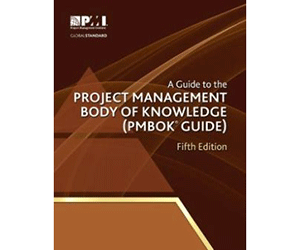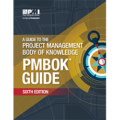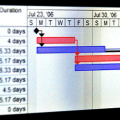
Managing the project schedule can be one of the most formidable parts of project management. I’ve seen more damaged client relationships through this area of project management than any other. Time management is essential to attaining successful projects.
The Project Management Body of Knowledge (PMBOK) developed by the Project Management Institute (PMI) contains the following breakdown for the time management knowledge area:
Plan Schedule Management
This involves the creation of a Schedule Management Plan, as well as the overall management of the schedule.
Inputs
- Project management plan
- Project charter
- Enterprise environmental factors
- Organizational process assets
Tools and Techniques
- Expert judgment
- Analytical techniques
- Meetings
Outputs
- Schedule management plan
Define Activities
In this step, the activities required to complete the project are defined and itemized. This is different from the work breakdown schedule (WBS) within the project scope management knowledge area in that the activities are more precise. That is, a WBS element will contain multiple activities. That being said, I’ve had small projects where I simply called the WBS and activities one and the same. The PMBOK allows for this on small projects.
Inputs
- Schedule management plan
- Scope baseline
- Enterprise environmental factors
- Organizational process assets
Tools and Techniques
- Decomposition
- Rolling wave planning
- Expert judgment
Outputs
- Activity list
- Activity attributes
- Milestone list
Sequence Activities
At this step the dependencies between the activities are determined. For example, if a task can’t start until the previous one finishes, they have a finish to start relationship. The other alternatives are finish to finish, start to start, or the very rare start to finish. Also involved in this step is the determination of leads and lags, the amount of time required for extracurricular tasks at the beginning or end of the activity.
Inputs
- Schedule management plan
- Activity list
- Activity attributes
- Milestone list
- Project scope statement
- Enterprise environmental factors
- Organization process assets
Tools and Techniques
- Precedence diagramming method (PDM)
- Dependency determination
- Leads and lags
Outputs
- Project schedule network diagrams
- Project documents updates
Estimate Activity Resources
Once the schedule network diagram has been produced, it’s time to estimate the required resources. Resources can include tools, equipment, contractors, or anything else necessary to perform the work on time.
Inputs
- Schedule management plan
- Activity list
- Activity attributes
- Resource calendars
- Risk register
- Activity cost estimates
- Enterprise environmental factors
- Organizational process assets
Tools and Techniques
- Expert judgment
- Alternative analysis
- Published estimating data
- Bottom-up estimating
- Project management software
Outputs
- Activity resource requirements
- Resource breakdown structure
- Project documents updates
Estimate Activity Durations
In this step, the required time for each activity is estimated.
Inputs
- Schedule management plan
- Activity list
- Activity attributes
- Activity resource requirements
- Resource calendars
- Project scope statement
- Risk register
- Resource breakdown structure
- Enterprise environmental factors
- Organizational process assets
Tools and Techniques
- Expert judgment
- Analogous estimating
- Parametric estimating
- Three-point estimating
- Group decision-making techniques
- Reserve analysis
Outputs
- Activity duration estimates
- Project documents updates
Develop Schedule
Once the duration of each activity, and the resources are known, the schedule can be developed. This involves using methods such as the critical path method, critical chain method, and others, to determine the overall completion date of the project. Float times for each activity are also important.
Inputs
- Schedule management plan
- Activity list
- Activity attributes
- Project schedule network diagrams
- Activity resource requirements
- Resource calendars
- Activity duration estimates
- Project scope statement
- Risk register
- Project staff assignments
- Resource breakdown structure
- Enteprise environmental factors
- Organization process assets
Tools and Techniques
- Schedule network analysis
- Critical path method
- Critical chain method
- Resource optimization techniques
- Modeling techniques
- Leads and lags
- Schedule compression
- Scheduling tool
Outputs
- Schedule baseline
- Project schedule
- Schedule data
- Project calendars
- Project management plan updates
- Project documents updates
Control Schedule
The big one is left to the end. What is the most effective way to control the project schedule? The truth is that the PMBOK gives you the mechanics, but this requires a bit of experience and judgement as to how each project management team will control and manage the schedule effectively.
Inputs
- Project management plan
- Project schedule
- Work performance data
- Project calendars
- Schedule data
- Organizational process assets
Tools and Techniques
- Performance reviews
- Project management software
- Resource optimization techniques
- Modeling techniques
- Leads and lags
- Schedule compression
- Scheduling tool
Outputs
- Work performance information
- Schedule forecasts
- Change requests
- Project management plan updates
- Project documents updates
- Organizational process assets updates






